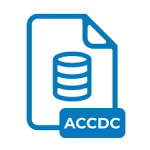.MPD File Extension

Microsoft Project Database
| Developer | Microsoft |
| Popularity | |
| Category | Database Files |
| Format | .MPD |
| Cross Platform | Update Soon |
What is an MPD file?
In the realm of digital technology, files come in various formats and extensions, each serving a specific purpose. One such extension is .MPD, which stands for Microsoft Project Database.
This article will delve into the intricacies of .MPD files, tracing their origin, examining their history and initial purpose, dissecting their file structure, discussing their technical specifications, and exploring both their advantages and disadvantages.
We will provide insights into how to convert .MPD files and open them on different operating systems.
More Information.
The history of .MPD files can be traced back to the early days of Microsoft Project, which was first introduced in 1984.
The software was known as “Microsoft Project for Windows” and used a proprietary file format to store project data.
Over the years, as the software evolved, so did the .MPD file format. These files were designed to store project plans, tasks, timelines, resource allocation, and other critical project management information.
Origin Of This File.
The .MPD file extension is closely associated with Microsoft Project, a project management software application developed by Microsoft.
Microsoft Project allows users to plan, manage, and track projects of various complexities. .MPD files are primarily created and used by Microsoft Project to store project-related data, making them an integral part of the software’s functionality.
File Structure Technical Specification.
To understand .MPD files better, it’s essential to examine their file structure and technical specifications. .MPD files are binary files, which means they are not human-readable like plain text files.
They consist of various data structures and elements, including project tasks, dependencies, calendars, and custom fields.
The technical specifications of .MPD files are proprietary and closely guarded by Microsoft. As such, they are not publicly documented, making it challenging for third-party developers to create compatible software for handling .MPD files.
Microsoft Project itself remains the primary tool for creating, editing, and viewing .MPD files.
How to Convert the File?
Converting .MPD files (Microsoft Project Database files) can be a bit challenging due to their proprietary nature and close association with Microsoft Project.
There are a few methods you can try to convert .MPD files to other formats or work with their data in different software applications. Here are some steps and methods you can follow:
Method 1: Export Data from Microsoft Project:
- Open Microsoft Project: Launch Microsoft Project on your computer.
- Open the .MPD File: Go to “File” > “Open” and select the .MPD file you want to convert.
- Export to Excel: In Microsoft Project, you can export the data to Microsoft Excel, which is a more widely supported format. To do this, follow these steps:
- Click on “File” > “Save As” or “File” > “Save As Excel.”
- Choose a location to save the exported file and give it a name.
- Select the desired Excel format (e.g., .xlsx) and click “Save.”
- Open in Excel: Locate the exported Excel file and open it in Microsoft Excel or any other spreadsheet software that supports Excel formats.
- Further Conversion: Once you have the data in Excel, you can then convert it to other formats, if needed, using Excel’s built-in export options or third-party conversion tools.
Method 2: Use Third-Party Tools:
While limited third-party tools are claiming to support.MPD file conversion, reliability, and compatibility can vary.
Some tools may offer conversion services to popular project management file formats like XML, but be cautious when using them, as they may not fully replicate the original.MPD file’s complexity. Here are the steps to consider when using third-party tools:
- Research and select a reputable third-party tool that claims to support .MPD file conversion.
- Download and install the chosen tool on your computer.
- Follow the tool’s instructions for opening and converting the .MPD file to the desired format.
- Verify the converted file for accuracy and completeness, as some data or formatting may be lost during conversion.
Method 3: Manual Data Entry:
If you only need specific data from the .MPD file and cannot find a suitable conversion method, manual data entry may be the most reliable option. Here’s how to do it:
- Open Microsoft Project and the .MPD file as mentioned in Method 1.
- Review the .MPD file’s contents and identify the specific data or information you need to transfer.
- Open the target application (e.g., another project management software, spreadsheet, or text editor) where you want to recreate or store the data.
- Manually enter the data from the .MPD file into the target application, following the same structure and formatting as closely as possible.
- Save the new file in the desired format, ensuring that it meets your conversion requirements.
Advantages And Disadvantages.
Advantage:
- Comprehensive Project Management: .MPD files are tailor-made for project management, allowing users to create detailed project plans, track progress, and allocate resources efficiently.
- Integration with Microsoft Office: Microsoft Project integrates seamlessly with other Microsoft Office applications, facilitating data sharing and collaboration.
- Robust Reporting: Users can generate detailed reports and charts directly from .MPD files, making it easier to communicate project status and insights to stakeholders.
Disadvantage:
- Proprietary Format: .MPD files are proprietary to Microsoft Project, which means users are dependent on the software and may face compatibility issues with other project management tools.
- Cost: Microsoft Project is not a free software, and obtaining licenses can be expensive, making it less accessible for smaller organizations or individuals.
- Learning Curve: The software has a steep learning curve, and novice users may require training to utilize its full potential effectively.
How to Open MPD?
Open In Windows
- Microsoft Project: .MPD files are most commonly associated with Microsoft Project. You can open .MPD files on Windows using Microsoft Project software, which is specifically designed for managing and working with project files.
Open In Linux
- Wine: You can try using Wine, a compatibility layer for running Windows applications on Linux. Install Wine on your Linux distribution and then attempt to run Microsoft Project within the Wine environment.
- Virtual Machine: Set up a virtual machine running Windows on your Linux system using software like VirtualBox or VMware. Install Microsoft Project within the virtual machine to open .MPD files.
Open In MAC
- Virtual Machine: Similar to Linux, you can install a virtual machine running Windows on your Mac using software like Parallels Desktop, VirtualBox, or VMware Fusion. Run Microsoft Project within the virtual environment to access .MPD files.
- Third-Party Software: Some third-party project management applications for macOS may offer limited .MPD file compatibility. These may not provide the full functionality of Microsoft Project.
Open In Android
- No Native Support: There were no native Android apps available for opening .MPD files, primarily because .MPD files are associated with desktop project management software. You may need to consider alternative file formats or cloud-based project management tools that offer mobile apps.
Open In IOS
- No Native Support: Similar to Android, as of my knowledge cutoff date, there were no native iOS apps designed to open .MPD files. You may need to explore alternative project management solutions or file formats compatible with iOS.
Open in Others
- Web-Based Tools: Some web-based project management tools offer .MPD file support. You can access these tools through a web browser on various operating systems.
- Conversion Services: Explore online conversion services or tools that claim to convert .MPD files into more common formats like XML or CSV. After conversion, you can work with the data in various applications.
- Consult with Microsoft: Microsoft may introduce new solutions or cross-platform compatibility in the future, so it’s a good idea to keep an eye on updates and announcements related to Microsoft Project.













